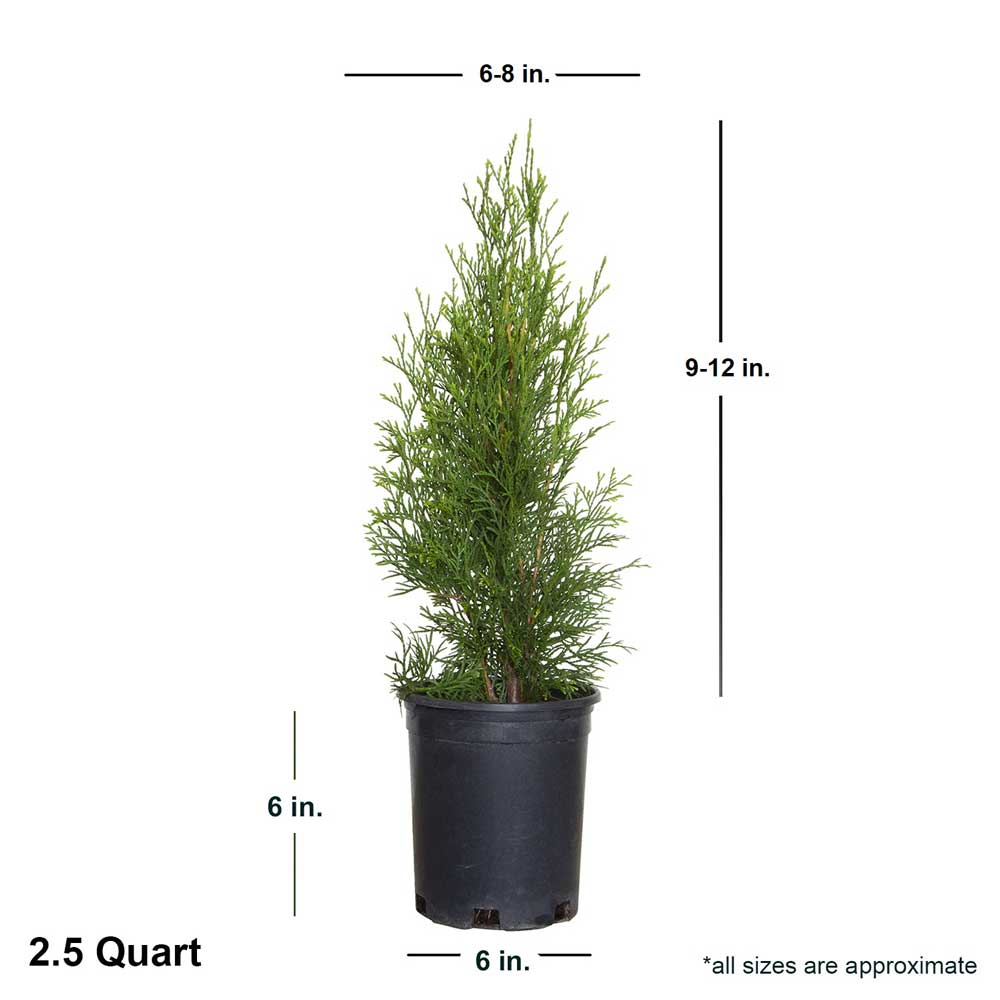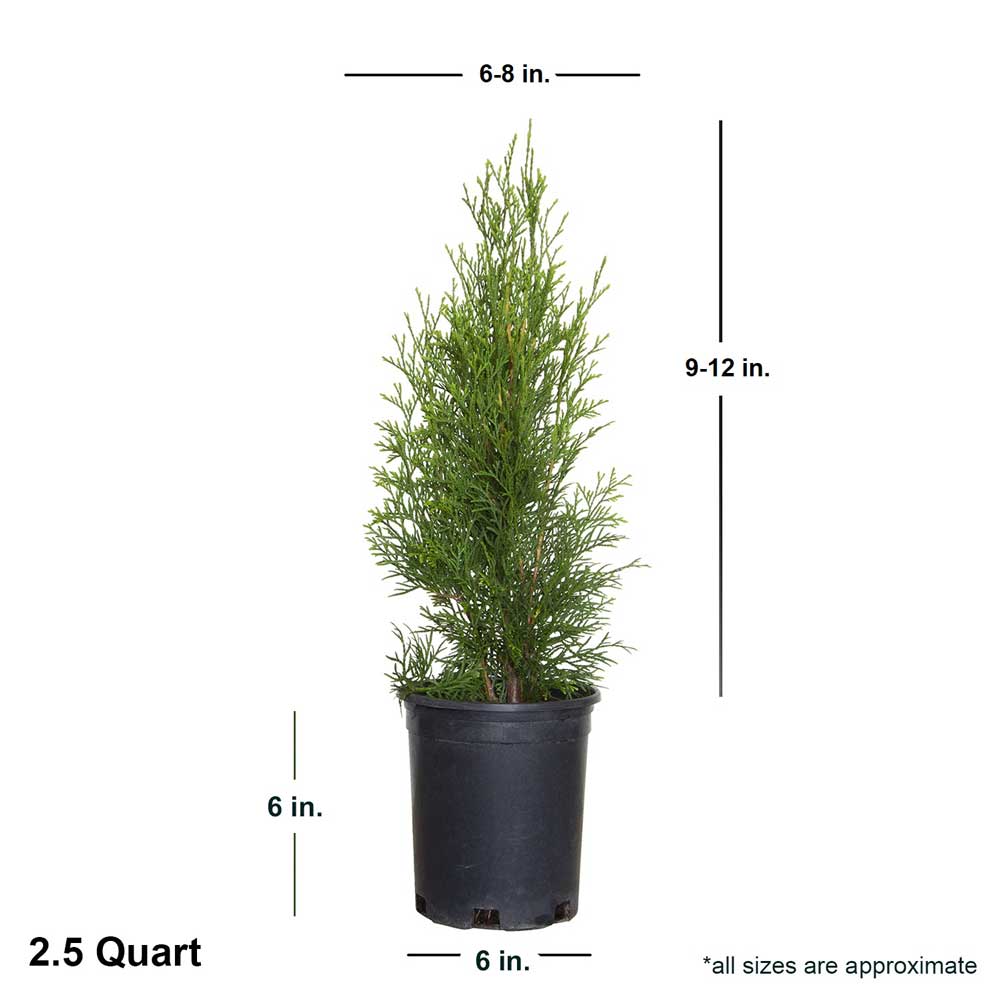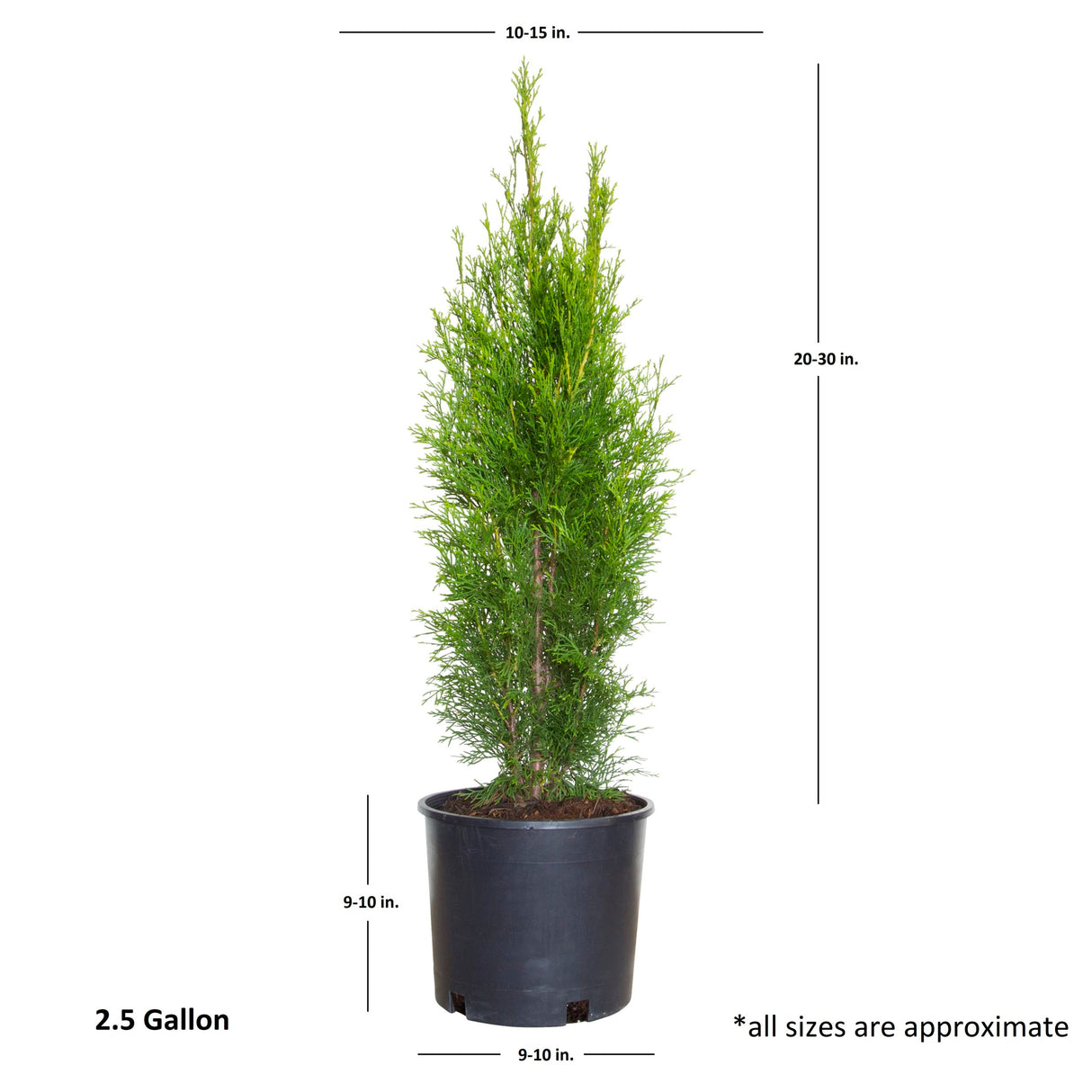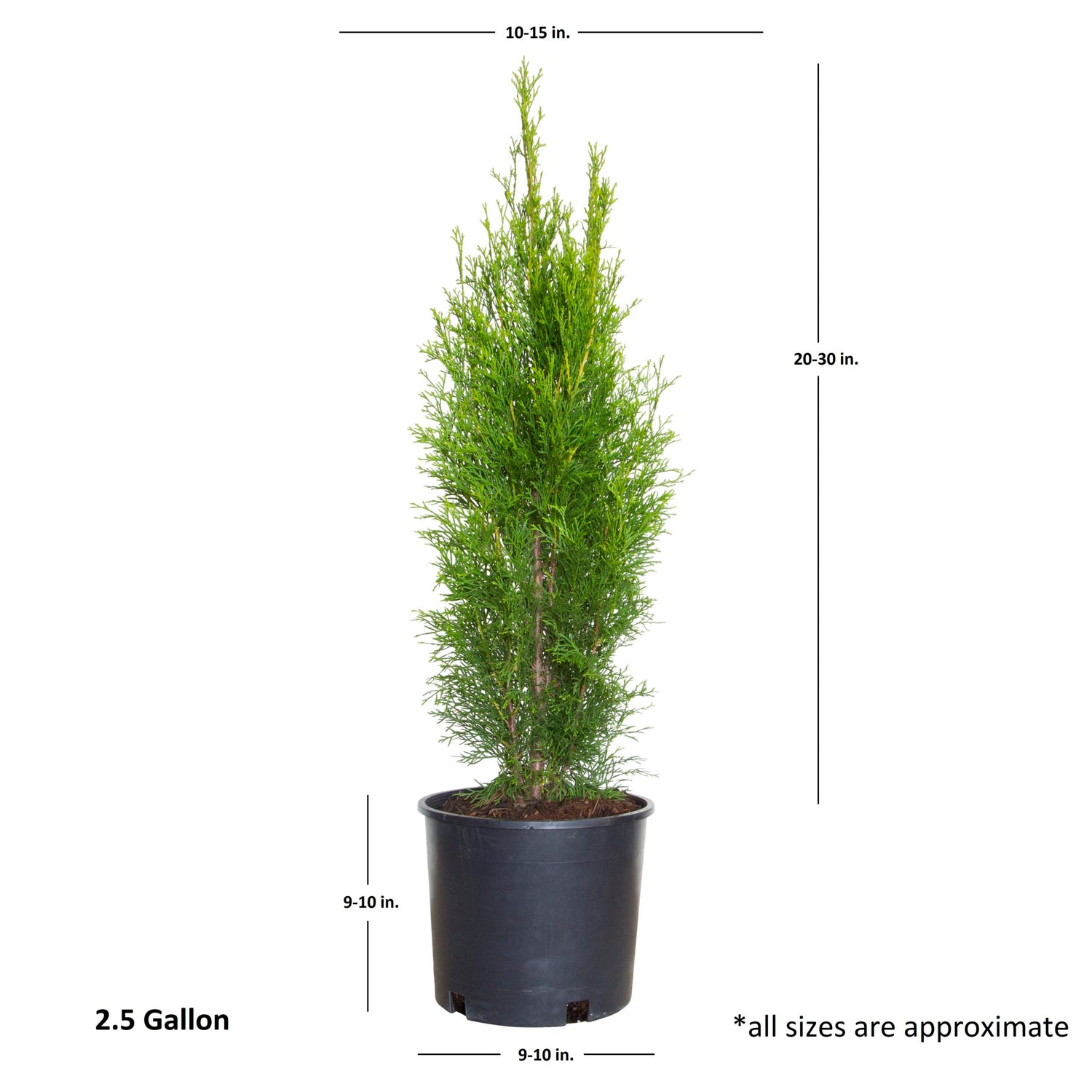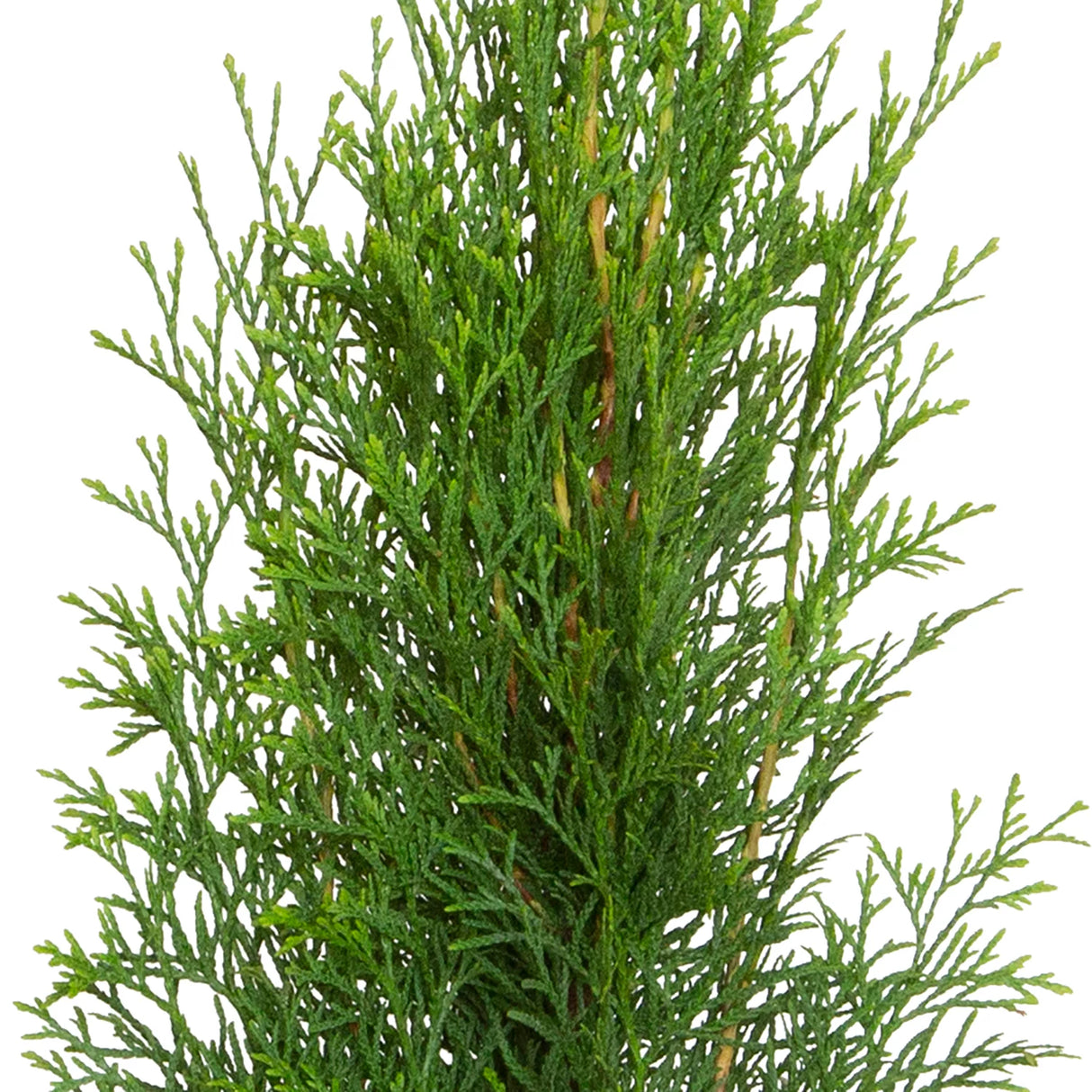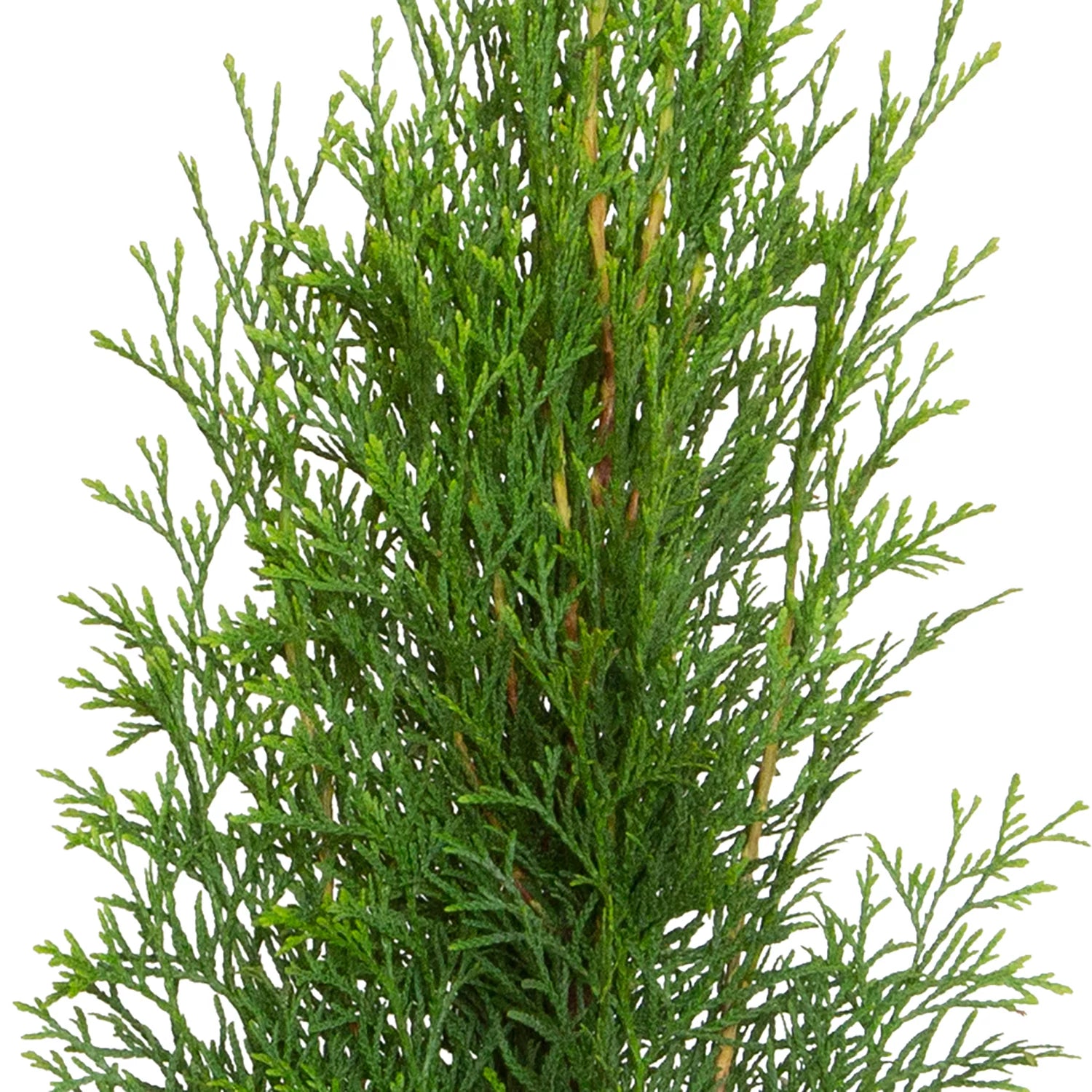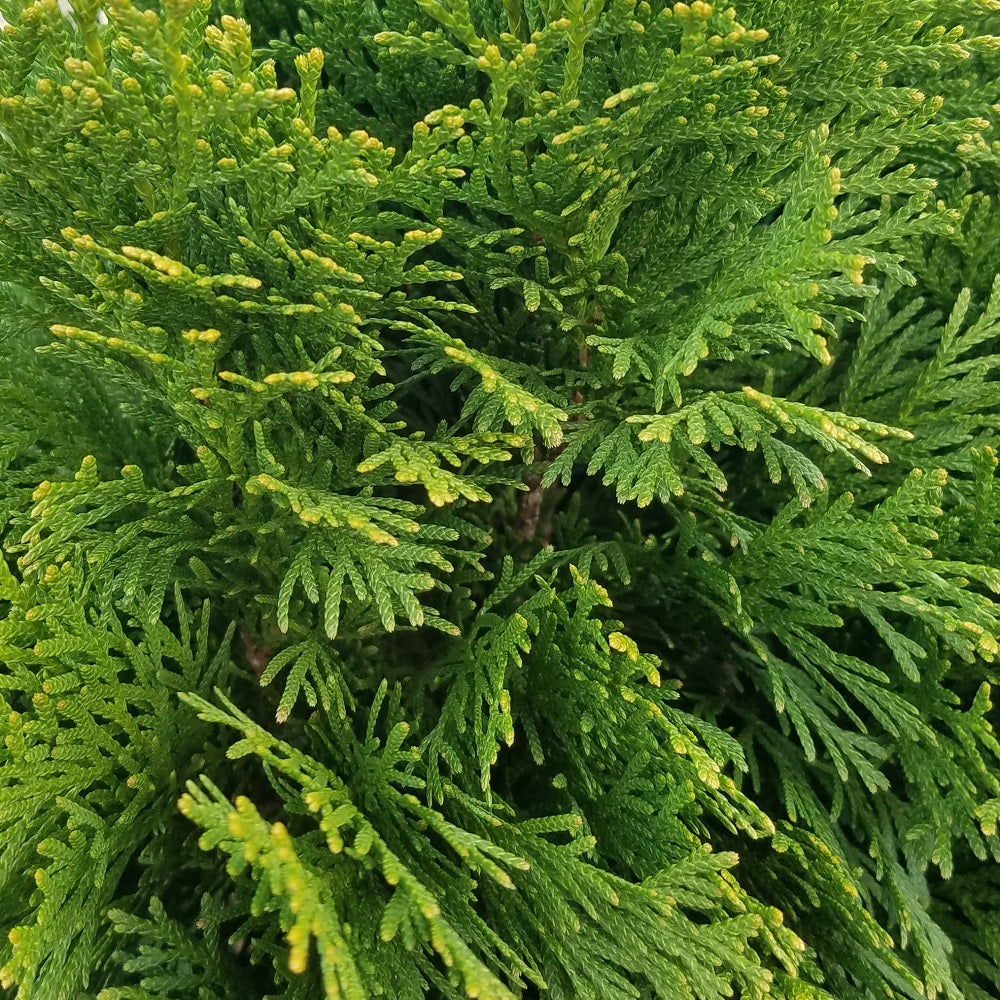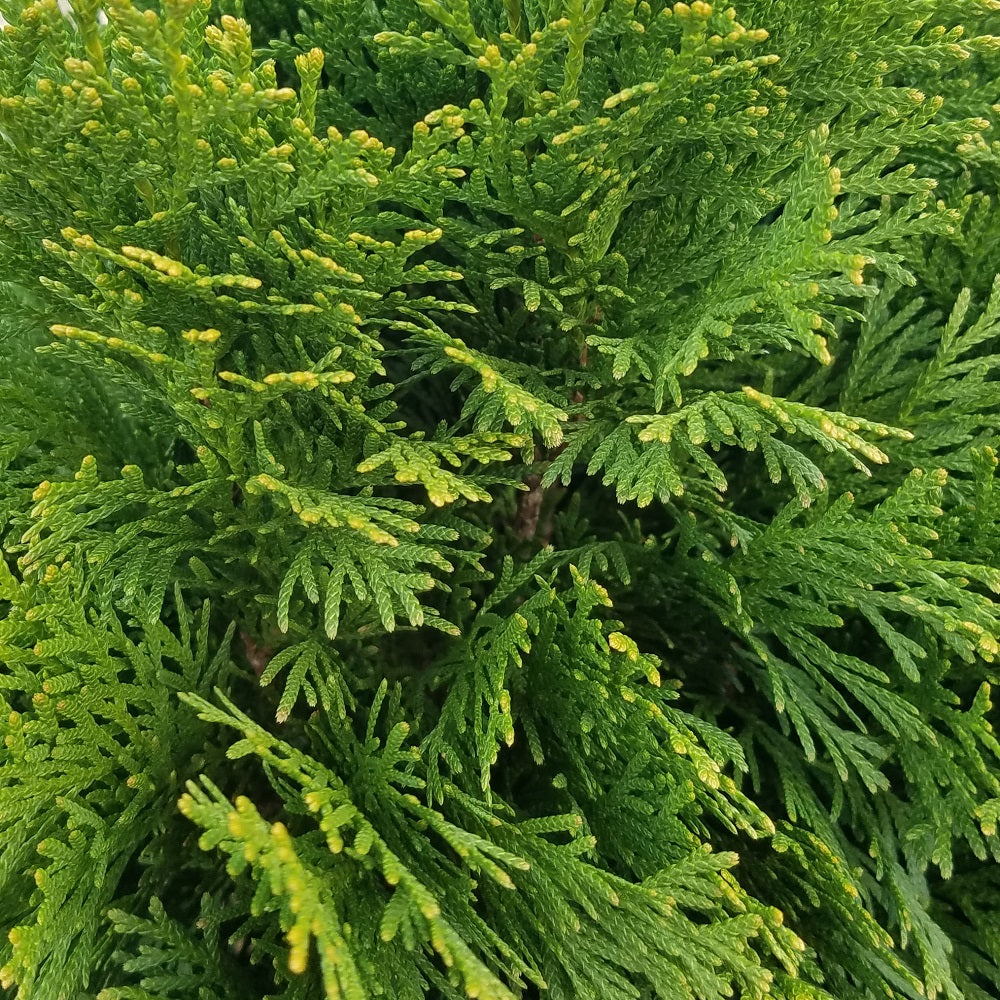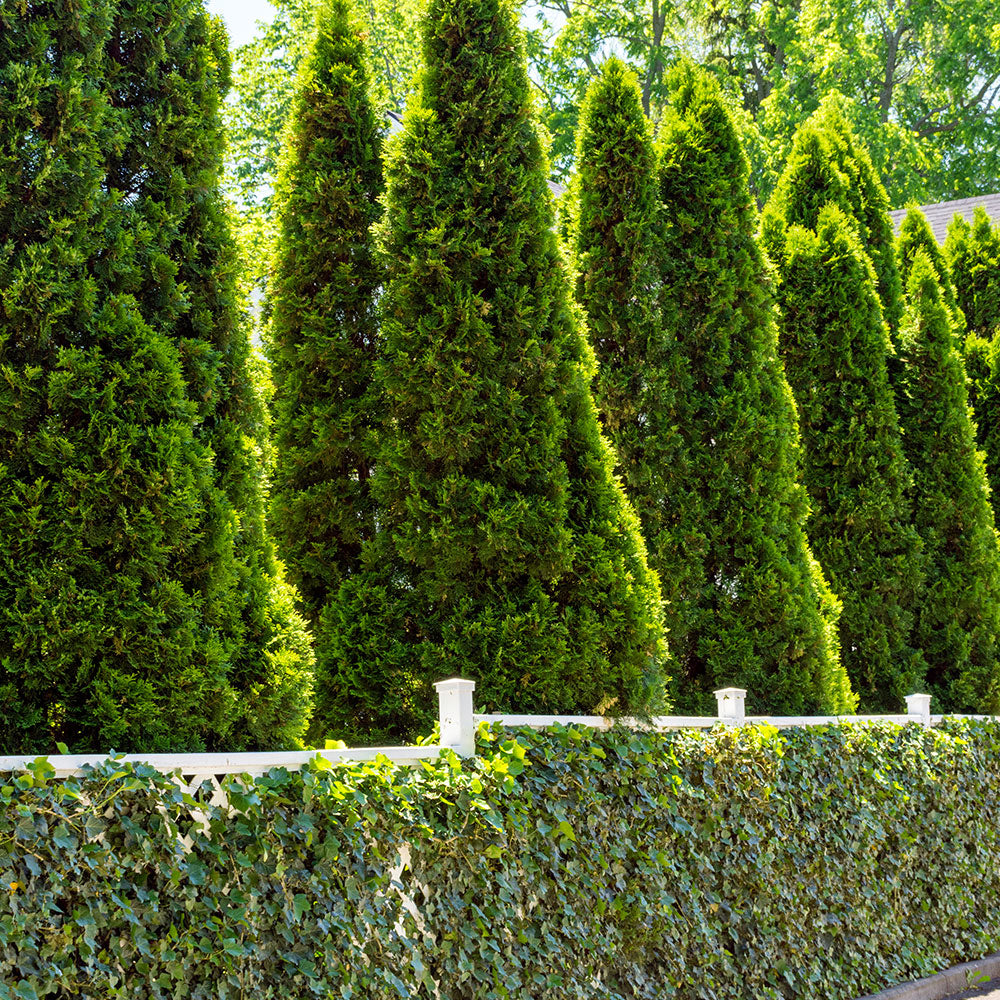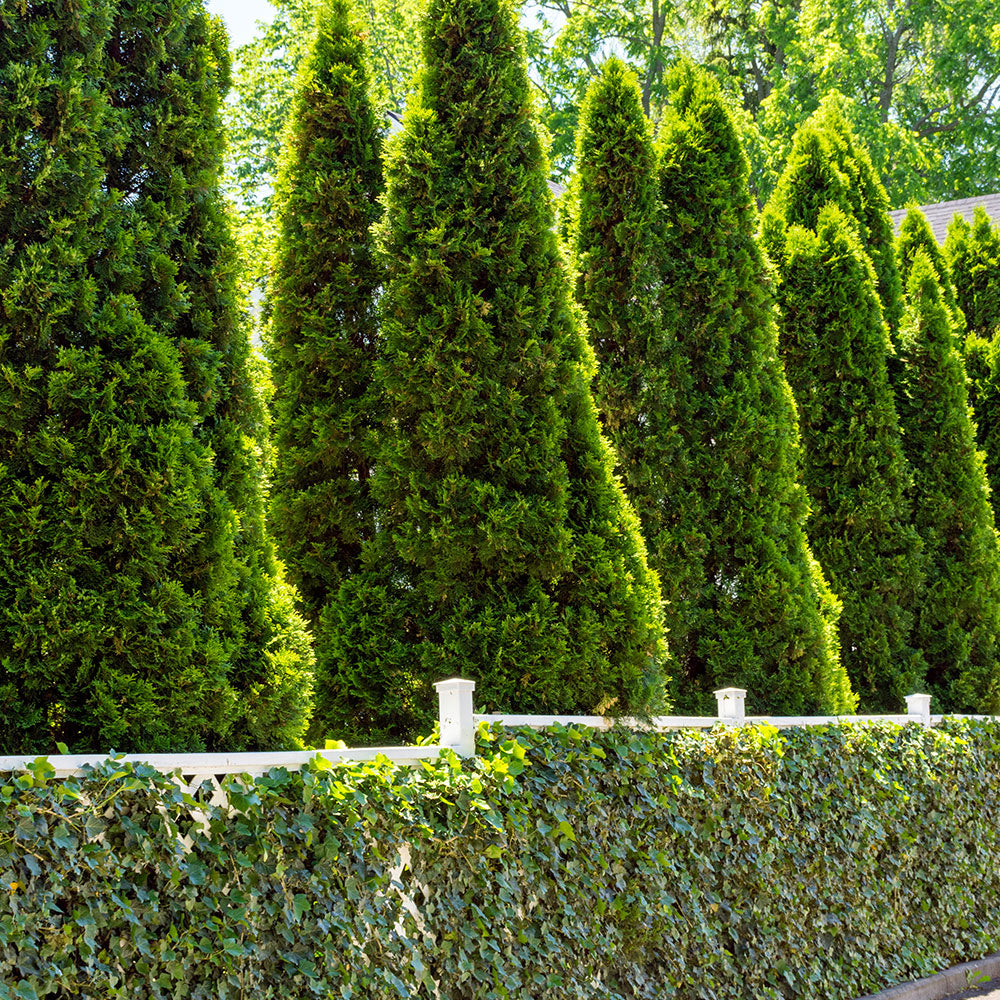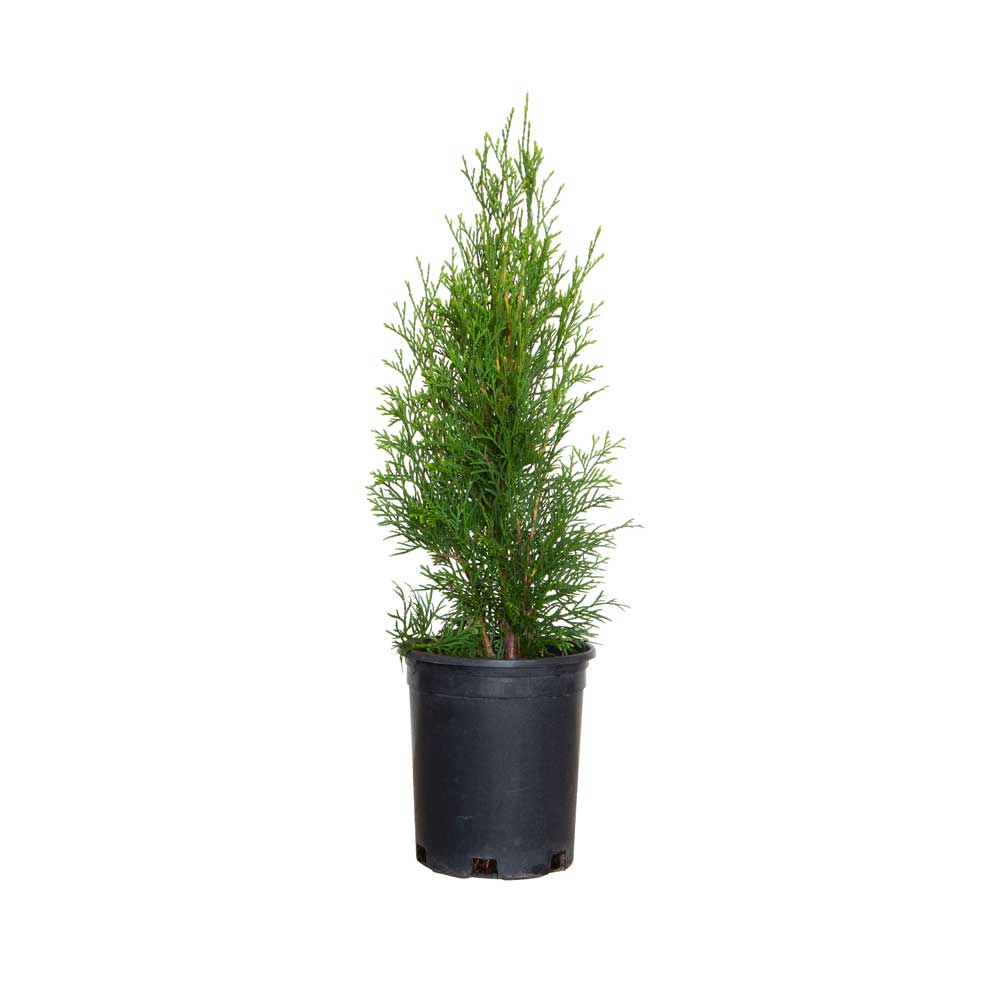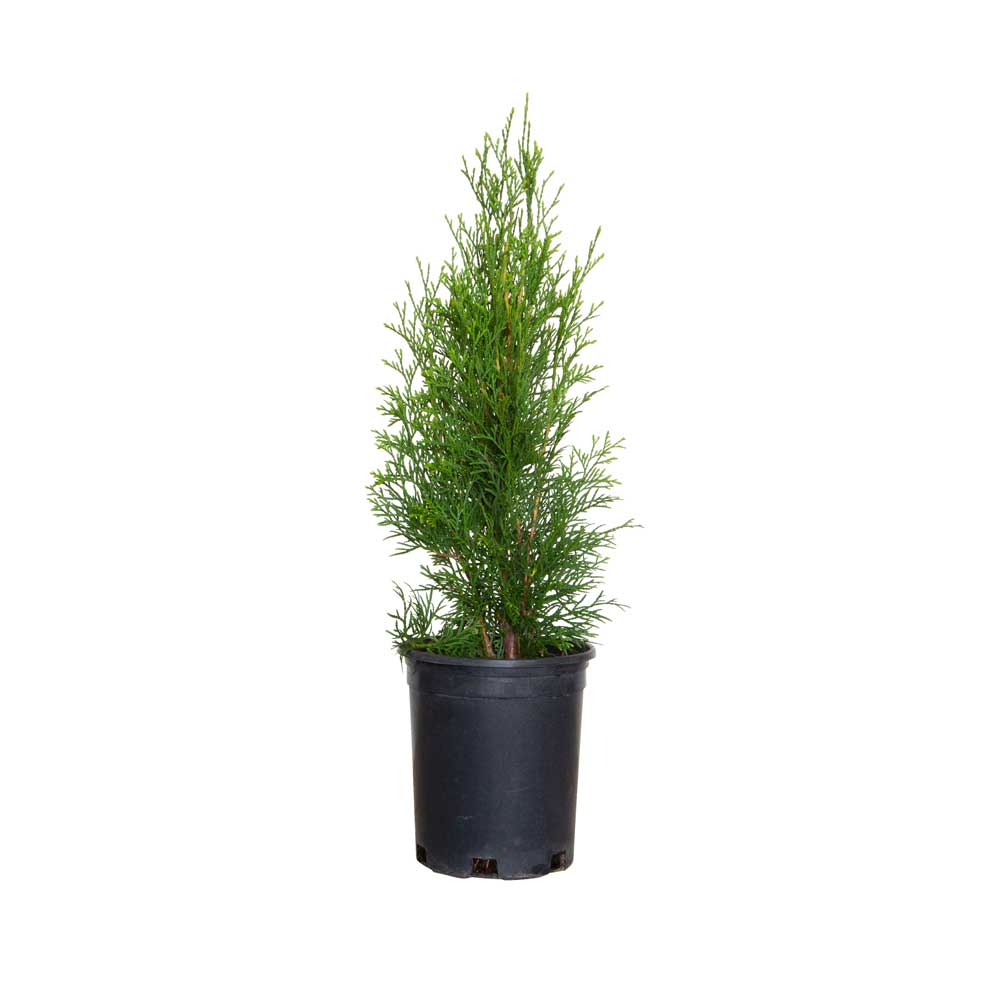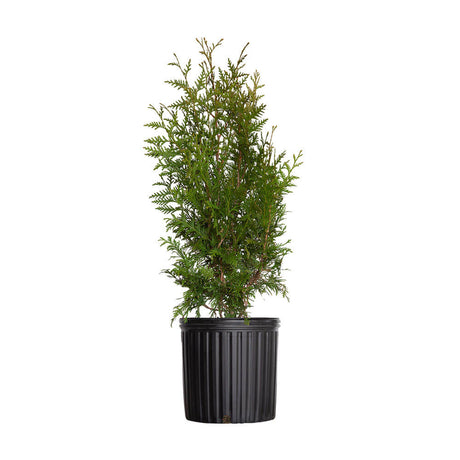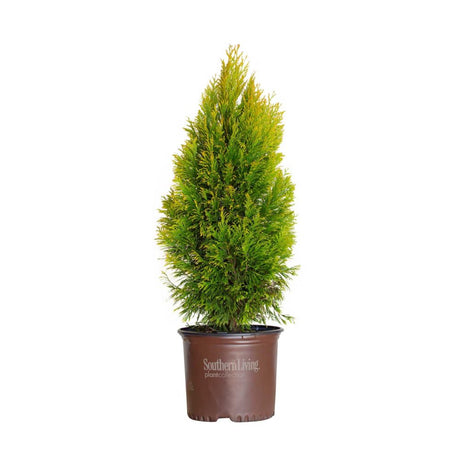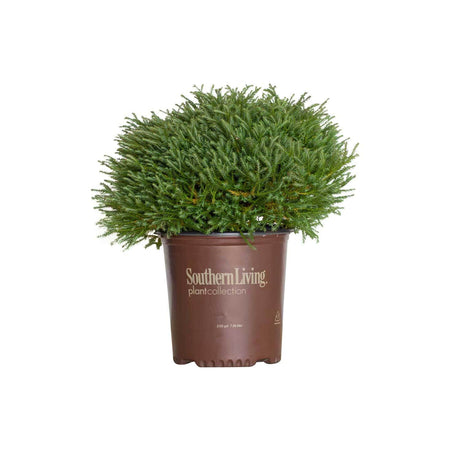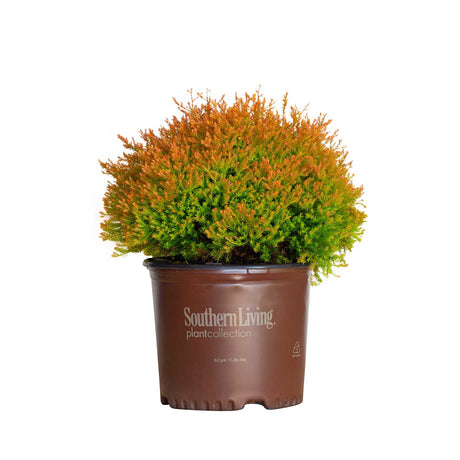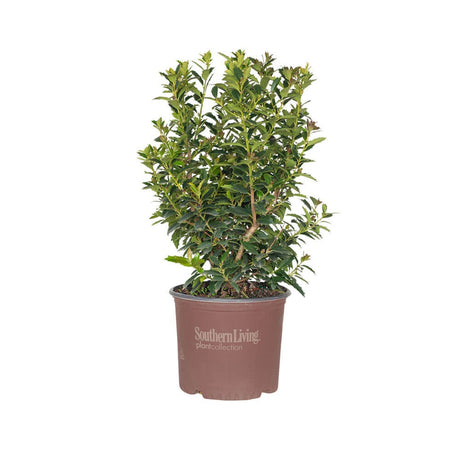Emerald Green Arborvitae
Emerald Green Arborvitae - 2.5 Quart is backordered and will ship as soon as it is back in stock.
Couldn't load pickup availability
Description
Description
The Emerald Green Arborvitae is a favorite for formal landscapes across the nation! As you might expect, this Arborvitae is named for its bright emerald-green foliage. Each evergreen branch features flat, scaled leaves that lay close together, creating dense foliage. Therefore, it's ideal for a privacy screen, windbreak, or sound dampener.
This is one of the most popular members of the Thuja family due to its controlled growth. While some similar varieties grow to be 60+ feet tall, such as the Green Giant Arborvitae, the Emerald Green only grows to be 12-15' H and 3-4' W.
The Emerald Green Thuja grows with a naturally narrow, pyramidal growth habit, no pruning required. So this is a fantastic tree for fans of low-maintenance gardens.
This selection is more heat and humidity tolerant than many Thuja, making it perfect for southern landscapes.
Try placing a couple of Emerald Greens in containers next to a doorway, or entrance. Line a driveway with them. Use them as a vertical element in a mixed garden. Trim it into a topiary. You almost can't go wrong!
This is a moderate grower, meaning it will grow between 1-2 feet per year, depending on its planting conditions. After you plant your Emerald Green Thuja, it will take about 2 years to develop mature root systems capable of keeping up with its growth rate. By the third year, you'll notice the tree growing upwards of 12-24 inches annually until it reaches full maturity.
Emerald Green Arborvitae Care
Hardy in USDA Zones 4-8, and down to -30°F when fully established.
Plant in Full Sun to ensure consistently dense, attractive foliage.
Water 2-3 times per week for the first growing season. For the next growing season, water 1-2 times per week. After that, it only needs supplementary water in times of extreme heat and drought.
Prefers to be planted in deep, fertile soil with good drainage and consistent moisture. Top-dress the soil beneath your plant yearly with compost to ensure it stays rich and healthy.
While your plant is still young, fertilize regularly with nitrogen-rich fertilizer to promote new growth. Once the plant has matured, a light yearly fertilizing will do the trick.
How to Plant:
- First, dig a hole three times the width of the root ball of your plant. This makes it easier for the root system to spread out quickly.
- Dig the hole deep enough that your plant will sit level with or slightly above the ground around it.
- Mix your native soil with rich gardening soil to provide extra nutrients and support plant growth.
- If your soil is clay-heavy, we recommend mixing your native clay soil with equal parts of Pine Bark mulch to improve drainage and the overall breathability of your soil.
- Put the plant in the hole and backfill around it with the soil mixture.
- Top the soil beneath your plant with 3-4 inches of mulch to help it retain moisture.
- Soak the plant with a hose afterward to hydrate the plant, as well as get the soil and mulch situated.
Popular Companion Plants
These trees' reliably attractive foliage provides the perfect backdrop for numerous different companion plants. Sunshine Ligustrum, for instance, contrasts beautifully thanks to its naturally rounded shape and a golden-yellow color. The White Wedding Hydrangea is another great accent as it has large white blooms that pop against a bright green foliage backdrop.
Boxwoods are a great choice to plant alongside Thuja occidentalis as well, especially for formal landscapes. It's easy to work in a Wintergreen Boxwood square hedge in front of or beside your trees. This is an easy way to bump up the elegance and class of your landscape. Not a fan of trimming formal hedges? Plant some Baby Gem Boxwoods. They grow in a rounded muffin-like shape that is just as classic as a square hedge.
Check out a few other privacy tree selections, such as the Leyland Cypress, Blue Point Juniper, or Italian Cypress.
Care & Use
Care & Use
Spacing Recommendations
Spacing Recommendations
-
Scientific Name
-
Hardiness Zone4, 5, 6, 7, 8
-
Sun ExposureFull Sun
-
Evergreen or DeciduousEvergreen
-
FeaturesAromatic, Attracts Birds / Butterflies, Sun Loving
-
Feature ColorGreen
-
UsesContainer, Hedge, Privacy Planting
-
Water NeedsMedium
-
Bloom SeasonNone
Growing Zones : 4, 5, 6, 7, and 8



